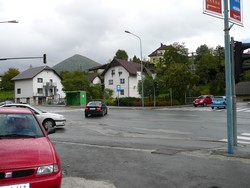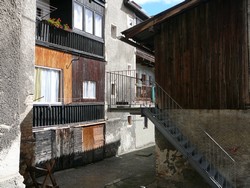 If we say that Slovenia lies on the crossroads of European population axis, located between the “Sun Belt” and the “Blue Banana” regions, then the hills of Posavje lie in the heart of Slovenia. The region is the biggest Slovenian micro region with the geometrical centre in Spodnja Slivna.
If we say that Slovenia lies on the crossroads of European population axis, located between the “Sun Belt” and the “Blue Banana” regions, then the hills of Posavje lie in the heart of Slovenia. The region is the biggest Slovenian micro region with the geometrical centre in Spodnja Slivna. In the heart of the hills Posavsko hribovje lays the Trbovlje municipality, which measures 57, 6 square kilometers and has 18100 inhabitants. The municipality lies in a narrow valley of the Trboveljščica stream which runs in the north-south direction and flows into the longest Slovenian river, the Sava River. The valley is surrounded by high hills and the pass connects it with the Savinja valley that is well-known for growing hop. Towards the south the roads run along the valley of the Sava River since traffic over Kum (Triglav of Zasavje region) that rises up to1220 m high, is not possible.
The city of Trbovlje is spread on the bottom of the valley at approximately 300m above sea level and on the steep slopes that surround the valley. In higher geographical positions, at approximately 700m, rural settlements are spread around the city like amphitheater: Čeče, Knezdol, Planinska vas… Settlements offer wonderful views towards mountainous regions of Slovenia.
 The area of today’s city of Trbovlje was settled very early which is proven by different findings from the pre-historical era. Findings stayed untouched up till the times of the counts of Celje, when they started to hunt deer in our forests. The bloom of the city happened with coal findings in the 19th century and with the building of the railway. It was followed by industrialization of the region, mass integration from former Yugoslavian republics, introduction of light industry, employment of women as labor force, etc.
The area of today’s city of Trbovlje was settled very early which is proven by different findings from the pre-historical era. Findings stayed untouched up till the times of the counts of Celje, when they started to hunt deer in our forests. The bloom of the city happened with coal findings in the 19th century and with the building of the railway. It was followed by industrialization of the region, mass integration from former Yugoslavian republics, introduction of light industry, employment of women as labor force, etc.In the 90’s happened the downfall of industry, the search of new opportunities, building of cleaning devices, high level of unemployment and that made one of former most successful regions of Slovenia into one of the poorest regions just over night.
There are things that we cannot be proud of: degraded environment, polluted waters, degraded landscape, polluted air and one of the highest rates of unemployment in Slovenia. The main question that arouses is what the region’s opportunities are in the future and what could be its potential. In the 20th century we have opened the door to numerous shopping centers that offer employments to several tens of people. Probably nothing can replace huge factories from the past that employed up to 8000 employees.
top